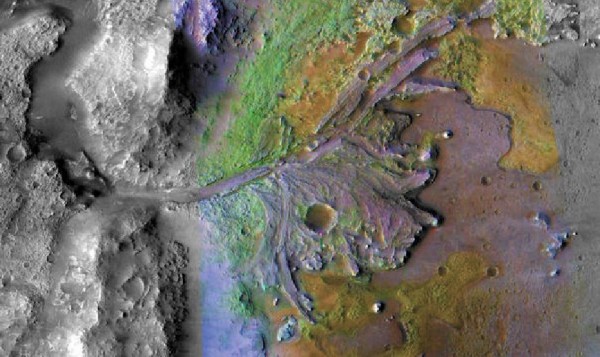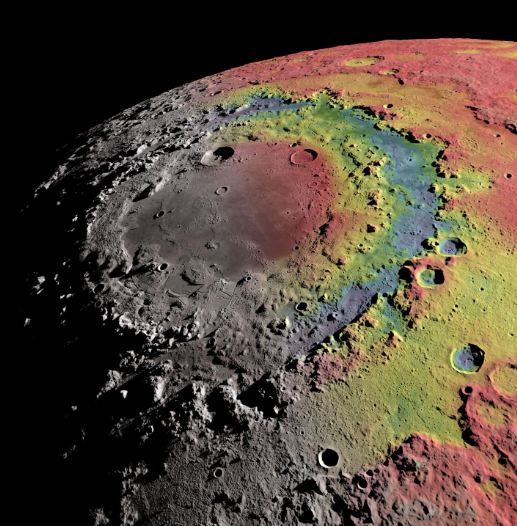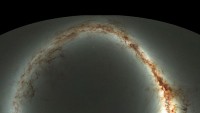NASA Picks Three Possible Landing Sites for Mars 2020 Rover
| Arthur Dominic Villasanta | | Feb 14, 2017 05:30 AM EST |
(Photo : NASA) Top candidate: Jezero Crater.
(Photo : NASA) NE Syrtis.
(Photo : NASA) Gusev Crater.
NASA has identified three candidate landing sites for its ambitious Mars 2020 rover mission that will more deeply examine the possibility of past life on the Red Planet.
At the third landing site workshop for the Mars 2020 mission from Feb. 8-10, a team of scientists narrowed down the list of potential places for the rover's landing to Columbia Hills in the Gusev Crater located at 14.5°S 175.4°E; NE (Northeast) Syrtis Major (8.4°N 69.5°E) and Jezero Crater (18.855°N 77.519°E).
Like Us on Facebook
Gusev Crater was the landing site of Spirit, the first of NASA's two Mars Exploration Rovers, which landed on January 3, 2004. Spirit eventually got to Columbia Hills, which is a proposed landing site for the Mars 2020 rover.
Orbital images indicate there might once have been a very large lake near the source of Ma'adim Vallis that could have provided the source of the lake water. Mineral springs once burbled-up from the rocks of Columbia Hills.
The discovery that hot springs flowed here was a major achievement of Spirit. The rover's discovery was an especially welcome surprise because Spirit had not found signs of water anywhere else in the 160 kilometer-wide Gusev Crater. After the rover stopped working in 2010, studies of its older data records showed evidence that past floods that may have formed a shallow lake in Gusev.
Syrtis Major Planum is a "dark spot" or an albedo feature that was later discovered to be a low-relief shield volcano. The dark color comes from the basaltic volcanic rock of the region and the relative lack of dust.
Volcanic activity once warmed NE Syrtis. Underground heat sources made hot springs flow and surface ice melt. Microbes could have flourished here in liquid water that was in contact with minerals.
The layered terrain of NE Syrtis holds a rich record of the interactions that occurred between water and minerals over successive periods of early Mars history.
With a diameter of 49.0 km, Jezero Crater is believed to have once been flooded with water since it contains a fan-delta deposit rich in clays. Life might also have developed in the crater since it is believed the lake was long-lived.
Jezero Crater tells a story of the on-again, off-again nature of the wet past of Mars. Water filled and drained away from the crater on at least two occasions.
During the workshop, the clear top candidate was Jezero crater. It was followed by Northeast Syrtis.
TagsMars, NASA, Mars 2020 rover mission, Columbia Hills, Gusev Crater, NE (Northeast) Syrtis Major, Jezero Crater, Mars Exploration Rover Spirit
©2015 Chinatopix All rights reserved. Do not reproduce without permission
EDITOR'S PICKS
-

Did the Trump administration just announce plans for a trade war with ‘hostile’ China and Russia?
-

US Senate passes Taiwan travel bill slammed by China
-

As Yan Sihong’s family grieves, here are other Chinese students who went missing abroad. Some have never been found
-

Beijing blasts Western critics who ‘smear China’ with the term sharp power
-

China Envoy Seeks to Defuse Tensions With U.S. as a Trade War Brews
-

Singapore's Deputy PM Provides Bitcoin Vote of Confidence Amid China's Blanket Bans
-

China warns investors over risks in overseas virtual currency trading
-

Chinese government most trustworthy: survey
-

Kashima Antlers On Course For Back-To-Back Titles
MOST POPULAR
LATEST NEWS
Zhou Yongkang: China's Former Security Chief Sentenced to Life in Prison

China's former Chief of the Ministry of Public Security, Zhou Yongkang, has been given a life sentence after he was found guilty of abusing his office, bribery and deliberately ... Full Article
TRENDING STORY

China Pork Prices Expected to Stabilize As The Supplies Recover

Elephone P9000 Smartphone is now on Sale on Amazon India

There's a Big Chance Cliffhangers Won't Still Be Resolved When Grey's Anatomy Season 13 Returns

Supreme Court Ruled on Samsung vs Apple Dispute for Patent Infringement

Microsoft Surface Pro 5 Rumors and Release Date: What is the Latest?
















